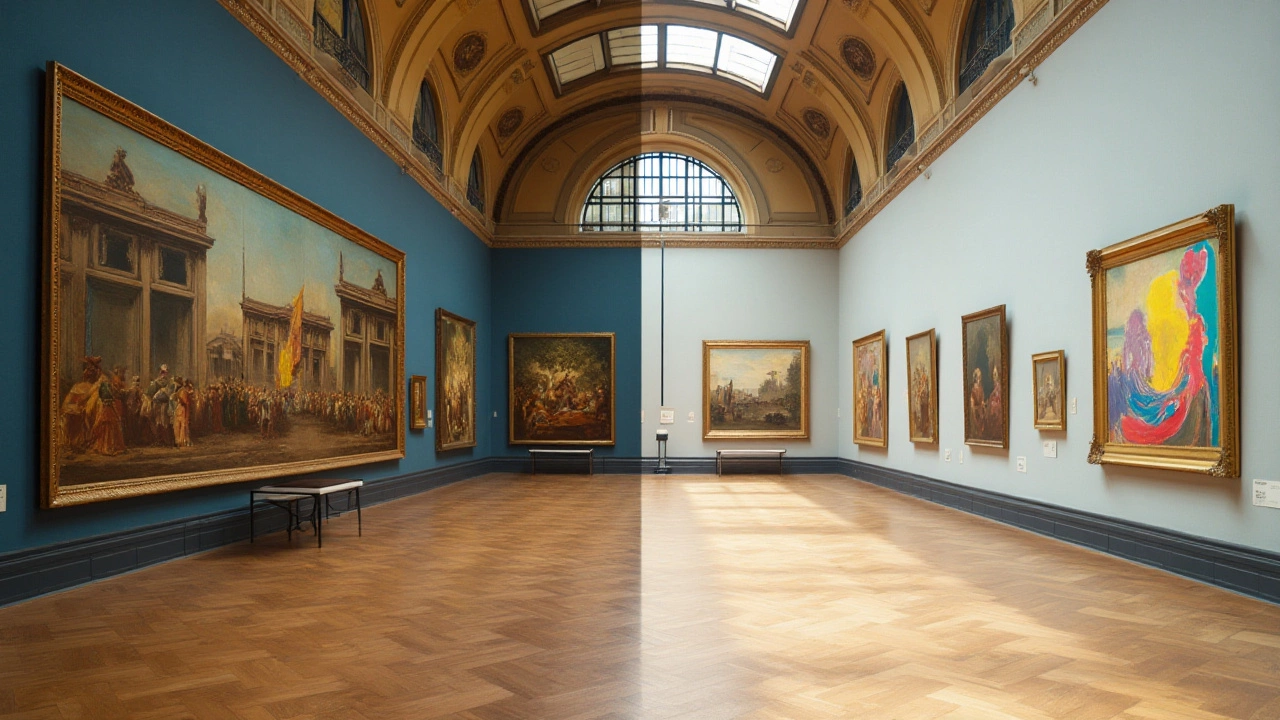Art Critique Made Easy: What to Look for and How to Write It
Ever stand in front of a painting and wonder what to say? You’re not alone. Most people feel stuck because they think critique needs a fancy degree. The truth is, a good critique is just a way of talking about what you see, feel, and think. This guide gives you a straight‑forward process you can use right now, whether you’re at a gallery, looking at a sculpture, or scrolling online.
What Makes a Good Art Critique
A solid critique has three parts: description, analysis, and judgment. First, describe what’s in the work. Name the medium, size, colors, and any obvious details. Next, analyze how those elements work together. Ask yourself: does the color choice set a mood? Does the composition lead your eye? Finally, give your judgment. You don’t need to label it “good” or “bad” – just explain why it works for you or why it falls flat.
Keep your language clear. Instead of saying “the piece is evocative,” try “the dark reds make me feel uneasy.” Specific words help the artist and other readers understand your view. Also, stay respectful. Even if you don’t like a work, focus on the choices the artist made, not personal attacks.
Step‑by‑Step Guide to Writing a Review
1. Set the scene. Write a quick line about the title, artist, where you saw it, and the medium. Example: “‘Morning Light’ by Jane Doe, oil on canvas, shown at the West End Gallery.”
2. Describe the basics. Note the main subjects, colors, size, and any text or symbols. Keep it factual – no opinions yet.
3. Look for technique. Ask how the artist achieved the effect. Is the brushwork loose or tight? Does the sculpture have smooth surfaces or rough edges? Mention what you notice.
4. Think about meaning. Consider what the work might be saying. Does it remind you of a memory? Does it comment on a current issue? You don’t have to guess the artist’s intention, just share what you interpret.
5. Give your response. Now you can say what you liked or didn’t like and why. Use phrases like “I felt drawn to the contrast between light and shadow” or “The composition felt cramped, making the scene feel tense.”
6. Wrap up. End with a short summary or a question for readers. Example: “Overall, the piece creates a strong sense of calm, but the lack of detail in the background leaves it feeling unfinished. What do you think?”
Practice these steps with any artwork you encounter, and you’ll notice your confidence grow. Over time, you’ll develop your own voice and be able to write longer reviews without feeling stuck.
Remember, art critique isn’t about proving you’re an expert. It’s a conversation about how art affects us. Stay curious, keep notes, and enjoy the process of looking deeper. Happy critiquing!

23 Jan 2025
Modern art often leaves traditional art enthusiasts questioning the perceived lack of skill involved in its creation. While historical art emphasizes technical proficiency, modern art prioritizes conceptual prowess and emotional resonance. This shift has sparked a debate about what constitutes skill in art, challenging preconceived notions about beauty, expression, and value. By examining the evolution of artistic techniques and exploring diverse perspectives, this article unravels the complexity surrounding modern art and its relationship with skill.
Continue reading...
